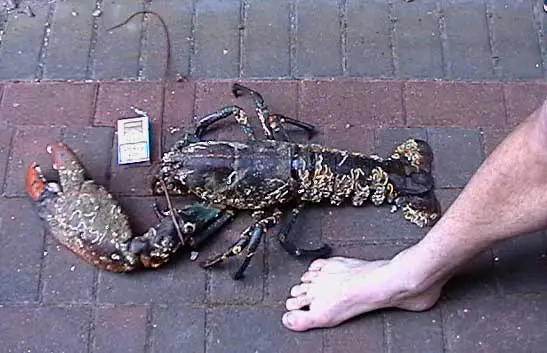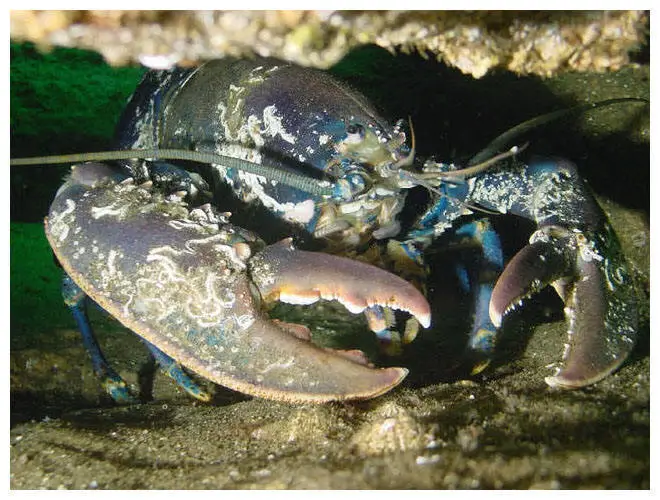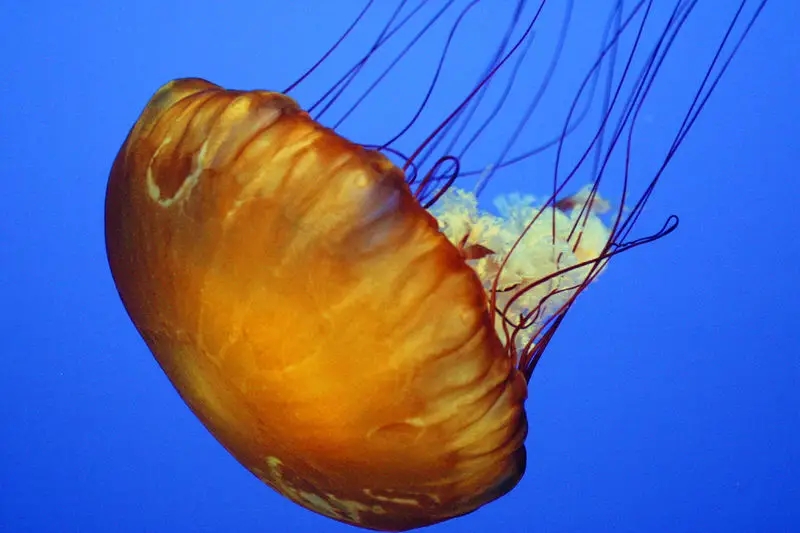European Lobster
Lobsters are an ancient animal species and fossils dating an age of about 200 million years have been found. They are crustaceans with incredibly strong claws, able to cut through most sea animal shells. These animals have been hunted since the beginning of history for their delicious meat, and there are stories of European Lobsters longer than 1 meter being caught in the past.
Nowadays, though, even the largest specimen rarely exceed the length of 50 cm, weighing no more than 5 kilograms. European Lobsters are widespread in almost all European sea shores, as well as the Northern and Western part of Africa. The animal’s body consists of 19 parts, each covered with a strong chitin shell. Lobsters have five sets of legs, while the first two have transformed into strong claws, which are used to kill and tear apart food. European Lobsters are coloured dark brown to black, with small white spots on the claws and the lower part of the body.
During the day, the lobster hides in cliff gaps or sea caves. At night, the creature goes hunting, carefully and slowly moving at the bottom of the sea. With the strong chitin shell, the European Lobster is well protected from most predators. The only downside of this shell is that it doesn’t grow – upon reaching a certain size, there is nothing left to do for the lobster but to drop the shell, under which a new one has already started developing. After changing the shell, the lobster often eats part of the old one, to acquire foodstuff that is in it.
Although the lobster’s claws are a dangerous weapon, the animal mostly feeds off carrion. Still, European Lobsters often attack snails, crabs and smaller fishes or even other lobsters if there’s a chance. The claws are used to rip apart animal shells or tear meat from the bones. One claw is smaller, more suited for holding the meat or chopping it into pieces, while the larger one is stronger and more capable of crushing shells and bones.
European Lobster females mate only when they have reached the age of 5-6 years. Mating occurs in summer, and the number of eggs increases from a few thousand at first to up to 150 000 later. The female carries the eggs around under the tail until they hatch – usually 9-12 months (it depends on the water temperature). About 7 mm long shrimp-like nymphs hatch and they immediately float to the surface of the water, becoming part of the plankton. For the first three weeks they feed on a variety of microorganisms, after which they go back to the bottom of the sea, where they drop their shell a few times before acquiring the looks of a mature individual. In total, European Lobster life expectancy is up to 20 years.
Being a delicacy, European Lobsters are massively fished, and even though they’re not as common as they were in the past, their population doesn’t seem to be endangered.




